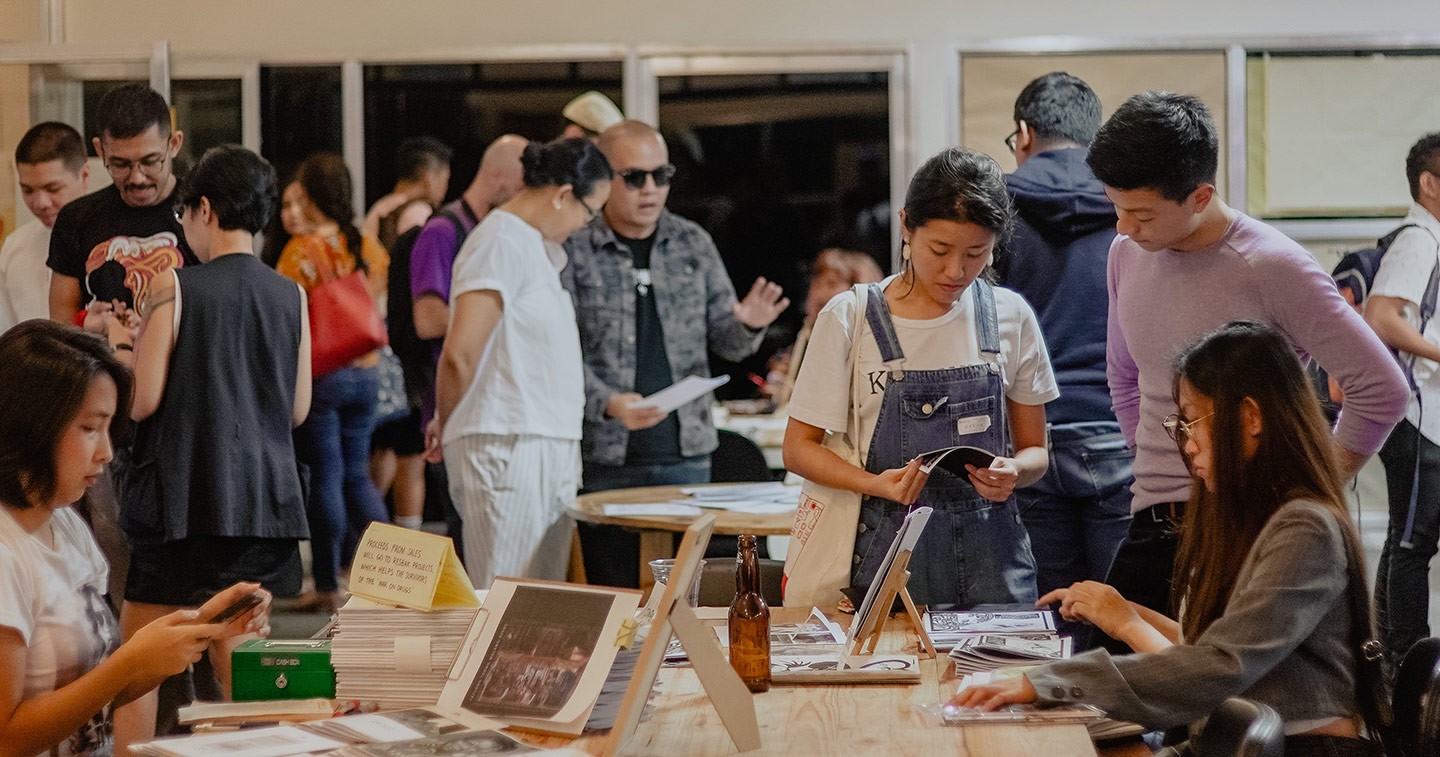“Para kang may dala-dalang agimat [It’s like a charm you bring with you]. One zine is one idea, and you just carry it with you,” says Carl Cervantes, a zine maker who has been in the game since 2016.
View this post on Instagram
Sponsor
Zines have served a bigger purpose than just a fun way to deliver all sorts of messages. As a medium, it has played a significant role in history, being the platform of choice for several movements that pushed for political reformation during Martial Law and other periods of turmoil within the country.
While they say print is struggling to survive, or that it’s now transitioning to a changed industry, the existence and proliferation of zines now is proof that people still have an appreciation for print, and that it continues to have a strong grasp on the country’s pulse and sentiments of those who dwell within it.
On September 21, 2019, Komura; held its first-ever zine fair where the zine is highlighted in its most basic radical format and where 42 zine vendors and makers gathered in Warehouse Eight to share their works.
Warehouse Eight’s usual co-working space was transformed to accommodate the event. Tables with zines on them were scattered throughout the room, and the zine makers all had their own pockets of spaces selling products they made from their hearts, and conversing with anyone who asks why they do what they do (and many people do ask out of sheer interest for the self-published works).

Lizette Daluz, who goes by @butterprim on Instagram, shares that working on zines is refreshing, and that there is great joy in being able to produce something purely out of her own imagination. “Yung walang constraint sa zine — doon sa concepts na tina-tackle. Pati na rin yung fast na pag-produce sakanya,” Daluz shares.
While most of the vendors there were used to the zine scene and were printing and selling them even before Komura; held its black and white zine fair, some of them were first-timers and made the zines for the event itself.
One such vendor is Grave Babe. When asked about her experience selling the zine for the first time, she shared: “It’s really fun and I’m gonna continue doing this and print more in better quality. I’m also planning to print it in color para mas ma-appreciate.”
Each vendors’ reason for making zines were also interesting to hear about. As self-published works, zines give their makers the freedom to pursue topics or visuals they are dying to pursue or advocate for. Landlee, for example, believes in equal rights for the LGBTQ+ community, and therefore made a zine filled with content based off on her own experiences and belief.
View this post on Instagram
As for the duo Makô, one of them shared how they started making zines: “Actually, nag start siya na lagi kaming nag-aaway kasi lagi ako nag ooverthink, nagkaka-anxiety attacks. So naisip niya [my partner], as a therapy, I start writing.”
View this post on Instagram
While Komura; gave a constraint to its vendors by making sure they only sell black & white works, zines made for the fair showed the ingenuity if their makers. Co-founder of Komura; Czyka Tumaliuan shared: “There was a constraint, but it brought out creativity out of people… Katulad nung matches, very interesting how constraint actually frees you.” The matches Tumaliuan was talking about are a creation of MitchMatches. Inside each matchbox is a meticulously folded zine.

Aside from the all-day zine swapping and selling, there were music, talks, and even a film.

While constricting its vendors to black and white is in itself related to why Komura; decided to hold it on September 21 — “It’s the commemoration of Martial Law and I guess, we want to emphasize how zines are an alternative source of information and we want to respond to that,” Tumaliuan shared with adobo magazine in an earlier interview. Its in the talks and the film showing that the reason for holding the zine fair on that specific day is explicitly seen.

The film, “Portraits of Mosquito Press” by JL Burgos, shows the viewers the struggle for press freedom during Martial Law. The term “Mosquito Press” came from Marcos himself as he belittled the small publications that wrote about the truth without censorship. Burgos, the son of the leading symbol of the Mosquito Press, documented recollections of those who were a part of his father’s team.
The talks — from Ateneo Matanglawin’s “Campus Press bilang Instrumento ng Kalayaan” to Hulyen’s “Talk na Nagpapaalalang Gumawa ka ng Zine” — on the other hand, tackled topics that emphasized the importance of zines and independent presses.
At the end of the film showing and the talks, the freedom that the generation of Filipinos have today to speak out and be heard is felt more so than ever. Tumaliuan said after one of the sessions: “For the writers here, I think it’s a responsibility to react and respond to what’s happening. We’re all free to do what we want.”
























